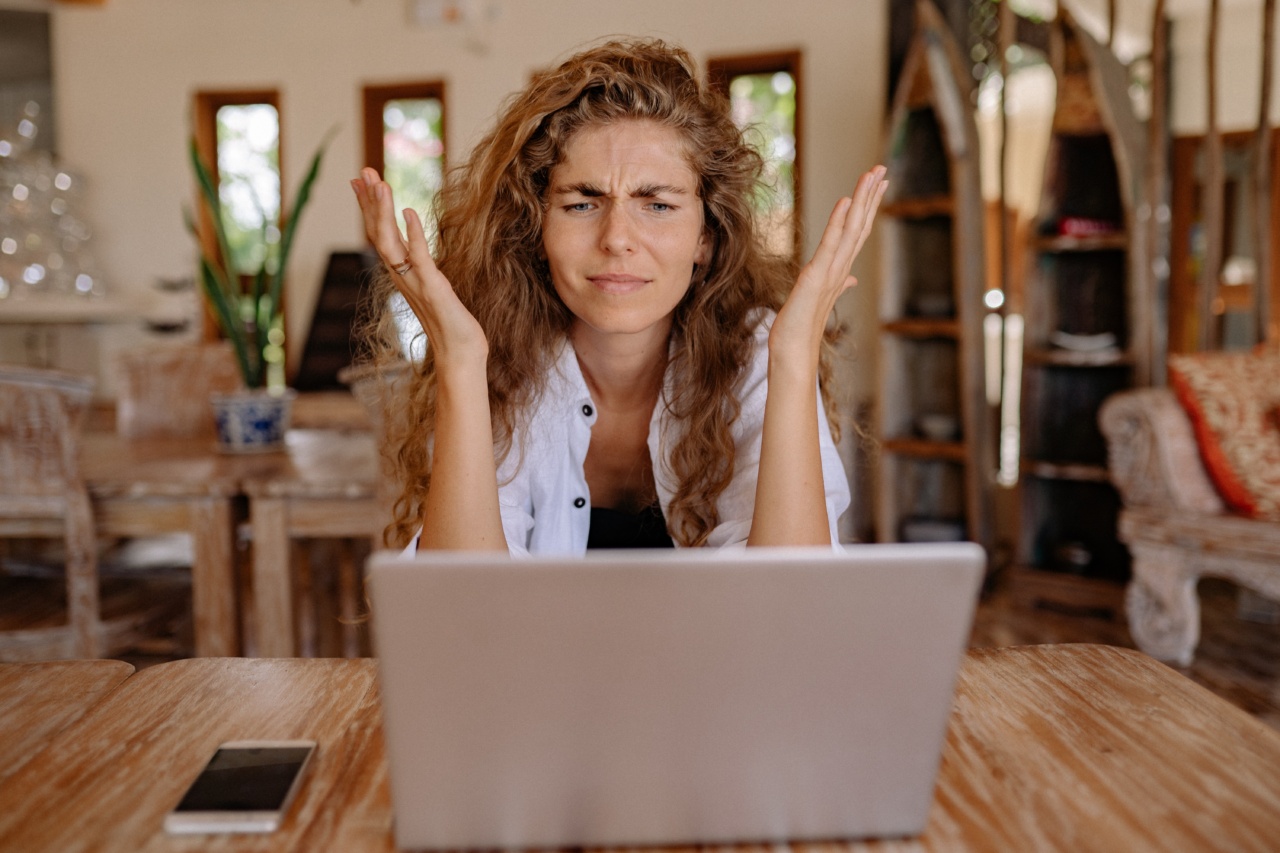Hemorrhoids, also known as piles, are swollen and inflamed vascular structures in the rectal area. They can cause discomfort, pain, itching, and bleeding.
Hemorrhoids can develop internally or externally, and understanding their manifestations is crucial for proper management and treatment.
Internal Hemorrhoids
Internal hemorrhoids are located inside the rectum, above the dentate line. They are usually painless and rarely cause any visible symptoms. However, some of the common manifestations of internal hemorrhoids include:.
1. Rectal Bleeding
One of the most common signs of internal hemorrhoids is rectal bleeding. Blood may be noticed on toilet paper, in the toilet bowl, or on stool.
Although hemorrhoid-related bleeding is usually painless, it should not be ignored and requires medical evaluation to rule out other serious conditions like colorectal cancer.
2. Prolapse
Internal hemorrhoids can sometimes prolapse or protrude outside the anus, especially during bowel movements. Prolapsed hemorrhoids may retract back on their own or require manual adjustment.
They can cause discomfort, a feeling of incomplete bowel movements, and may require medical intervention if they become incarcerated.
3. Mucous Discharge
Some individuals with internal hemorrhoids may experience a mucous discharge from the anus. This discharge can cause irritation and itching, leading to discomfort and the urge to scratch, which may further worsen the symptoms.
External Hemorrhoids
External hemorrhoids are located under the skin around the anus. They can cause more noticeable symptoms compared to internal hemorrhoids. The manifestations of external hemorrhoids include:.
1. Pain and Discomfort
External hemorrhoids can cause significant pain and discomfort, especially during bowel movements and when sitting for prolonged periods.
The pain is often described as a sharp, burning sensation and can be aggravated by rubbing or scratching the affected area.
2. Swelling and Itching
The affected area around the anus may become swollen, red, and itchy. The skin may appear shiny and feel tender to the touch. Itching can be intense and lead to a constant desire to scratch, which can further irritate the area and cause more discomfort.
3. Blood Clots (Thrombosed External Hemorrhoids)
In some cases, external hemorrhoids can develop blood clots within them, resulting in a condition called thrombosed external hemorrhoids. This can cause severe pain, swelling, and a bluish hue in the affected area.
Thrombosed hemorrhoids often require medical intervention, such as incision, drainage, or clot removal.
Risk Factors for Hemorrhoids
Hemorrhoids can affect anyone, but certain risk factors increase the likelihood of developing them. These include:.
1. Constipation and Straining during Bowel Movements
Chronic constipation and straining during bowel movements put increased pressure on the rectal veins, making hemorrhoids more likely to occur.
Eating a high-fiber diet, staying hydrated, and avoiding prolonged periods of sitting or standing can help prevent constipation and reduce the risk of hemorrhoids.
2. Prolonged Sitting or Standing
Sitting or standing for extended periods can lead to increased pressure on the rectal veins, contributing to the development of hemorrhoids.
Taking regular breaks, using ergonomic seating, and engaging in physical activity can help alleviate this pressure and reduce the risk of hemorrhoids.
3. Pregnancy
Pregnancy causes hormonal changes and increased pressure on the pelvic area, making pregnant individuals more prone to developing hemorrhoids. The growing uterus also puts additional pressure on the rectal veins.
Managing constipation, maintaining good hygiene, and using appropriate sitting positions can help alleviate symptoms during pregnancy.
4. Obesity
Excess weight and obesity can increase abdominal pressure, leading to the development of hemorrhoids. Maintaining a healthy weight through regular exercise and a balanced diet can lower the risk of hemorrhoids.
5. Age
As individuals age, the tissues supporting the rectal veins become weaker, increasing the risk of developing hemorrhoids. Lifestyle modifications, such as a high-fiber diet and regular exercise, can help reduce this risk.
When to Seek Medical Attention
While most hemorrhoids can be managed with conservative measures, certain situations warrant medical attention. These include:.
1. Severe or Prolonged Bleeding
If rectal bleeding persists or is accompanied by dizziness, lightheadedness, or weakness, it is essential to seek immediate medical attention. Heavy bleeding may indicate a more serious condition that requires prompt evaluation and treatment.
2. Excruciating Pain
If the pain associated with hemorrhoids becomes severe and is not relieved with over-the-counter remedies, medical intervention may be required.
This is particularly true if it is difficult to perform daily activities or the pain is significantly affecting quality of life.
3. Excessive Swelling or Prolapse
If the hemorrhoids are swollen, protruding continuously, or cannot be manually retracted, medical evaluation is necessary. Severe swelling can impede blood flow and lead to complications.
4. Recurring or Chronic Hemorrhoids
If hemorrhoid symptoms persist or keep recurring despite self-care measures, it is advisable to consult a healthcare professional. Chronic hemorrhoids may require further investigation and treatment options beyond conservative management.
Treatment Options
The treatment of hemorrhoids depends on the severity of symptoms and their impact on daily life. Mild hemorrhoids can often be managed with conservative measures, including:.
1. Dietary Modifications
Incorporating a high-fiber diet by consuming fruits, vegetables, whole grains, and legumes can soften the stool and ease bowel movements. Adequate hydration is also essential for preventing constipation and optimizing digestion.
2. Topical Medications
Over-the-counter creams, ointments, or suppositories containing hydrocortisone or witch hazel can provide temporary relief from itching, swelling, and discomfort associated with hemorrhoids.
3. Warm Sitz Baths
Soaking the anal area in warm water for 10-15 minutes several times a day can help alleviate pain, reduce swelling, and promote healing of hemorrhoids. It is crucial to gently pat the area dry afterward to avoid further irritation.
4. Stool Softeners and Laxatives
If constipation persists despite dietary changes, the use of stool softeners or mild laxatives may be recommended to prevent straining during bowel movements and relieve symptoms.
5. Procedures and Surgical Intervention
If conservative methods fail to provide relief or in cases of severe hemorrhoids, various procedures can be considered.
These include rubber band ligation, sclerotherapy, infrared coagulation, and hemorrhoidectomy, which involves surgically removing the hemorrhoids.
Prevention is Key
To prevent problematic hemorrhoids, it is essential to adopt a healthy lifestyle and take preventive measures such as:.
1. Maintaining Good Hygiene
Keeping the anus clean and dry after each bowel movement helps prevent anal irritation and reduces the risk of infection. Avoid using rough toilet paper and opt for moist wipes or bidets for gentle cleaning.
2. Avoiding Prolonged Sitting or Standing
Take breaks and try not to sit or stand in one position for too long. If your job requires long hours of sitting, consider using ergonomic chairs or using a standing desk intermittently.
3. Regular Exercise
Engage in regular physical activity to improve blood circulation, maintain a healthy weight, and promote bowel regularity. Exercises such as walking, swimming, and yoga can help prevent constipation and reduce the risk of hemorrhoids.
4. Adequate Fluid Intake
Drink plenty of fluids throughout the day to stay hydrated. Water and other non-caffeinated beverages help soften the stool, making it easier to pass during bowel movements.
Conclusion
Hemorrhoids can manifest in different ways, depending on whether they are internal or external. Recognizing the manifestations of problematic hemorrhoids is crucial for timely intervention and management.
By understanding the risk factors and adopting preventive measures, individuals can significantly reduce their likelihood of developing hemorrhoids. Early medical attention should be sought if symptoms worsen, persist, or interfere with daily activities, as prompt intervention can prevent complications and provide relief.






























